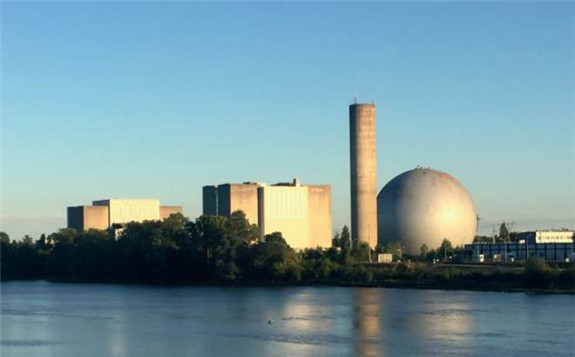 Three gas-cooled reactors operated at the Chinon site from the early 1960s. Chinon A1, A2 and A3 were shut down in 1973, 1985 and 1990, respectively. Their partial dismantling was completed in 1984, 1992 and 2007 (Image: EDF)
Three gas-cooled reactors operated at the Chinon site from the early 1960s. Chinon A1, A2 and A3 were shut down in 1973, 1985 and 1990, respectively. Their partial dismantling was completed in 1984, 1992 and 2007 (Image: EDF) A number of first-generation reactors had graphite blocks as moderator, reducing the speed of neutrons and allowing a nuclear reaction to be sustained. This is reactor-grade material produced at about 3000°C which accumulates some radionuclide contamination while in service, particularly carbon-14 at levels which often means that it must be classified as intermediate-level radioactive waste.
The dismantling of graphite reactors is complex because of their design - a stack of graphite layers inside the reactor - and the volume of materials to be removed, according to EDF and Veolia. They note that there are around 60 such reactors in the world, but so far only two small graphite power reactors have been dismantled.
The companies, through their respective subsidiaries Cyclife Holding and Asteralis, today launched Graphitech, which will be responsible for the technological development and engineering studies required in preparation for decommissioning nuclear reactors that use graphite technology. The venture will develop remote-operated tools to break up complex, large-scale concrete and metal structures, as well as tools to extract activated graphite bricks and piles. It will also design systems and articulated arms to enable deployment of these tools.
Graphitech's first objective will be to provide EDF with an optimised scenario for decommissioning the Chinon A2 reactor in 2028 and to offer a testing programme to evaluate the technological solutions needed to complete the project. This programme will begin in 2022 with a development and qualification phase using full-scale models to prepare the remote-operation tools to be used in decommissioning the Chinon reactor.